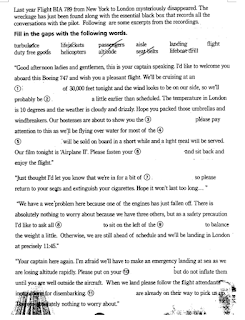commentary
Debra Aarons, who teaches linguistics, believes much of the knowledge we have about language is unconscious and that a very good way to explain a linguistic point, is through a good joke.
A linguistics lecturer is giving a class on negation . . .
'In some languages,' he explains, 'such as Italian, you need only one negative item for the sentence to have negative polarity. In some languages, such as Afrikaans, you require two negative items for the sentence to have negative polarity. Whereas, in some other languages, two negatives will give you a positive polarity, as in English. However, in no language do two positive items yield a negative polarity.' And then from the back of the hall comes the students' response, 'yeah, yeah,' and 'yeah, right!' . . . . . .
(From Debra's book Jokes and the Linguistic Mind.)
She says that jokes can tell us something about the organisation of language in the mind.
Another. . .
A [stereotypical] blonde walks into a library, walks up to the reference desk, and says, 'I'd like to get a double burger, a packet of chips and a diet coke, please.' The librarian looks at her in absolute horror, and she hisses, 'this-is-a-li-bra-ry!' The woman responds, 'Oh! I'm so, so sorry,' and whispers, 'I'd like to get a double burger, a packet of chips, and a diet coke, please.'
In practise, Debra uses this joke to teach pragmatics and speech act theory (an utterance considered as an action, particularly with regard to its intention, purpose, or effect) in order to point out that we have to recognise the intention of a speaker, not just the words. Above, the stereotypical blonde got the intention of the librarian: that she was being rebuked; she was doing something wrong. However, not being so smart, she didn't realise what she was doing wrong.
Debra comments that every time we speak we convey intention. Be it criticism, apology, demand, request or rebuke as with the joke above. She says that's called 'elocutionary force' and the point is we know how to respond to it. A text book example: someone walks into a room and says 'Ooh! It's hot in here,' not commenting on the weather per se, but suggesting someone open the window or turn on the air-conditioner. With this, Debra makes the point that speaking is something we do, rather than exchanging simply true or false propositions.































